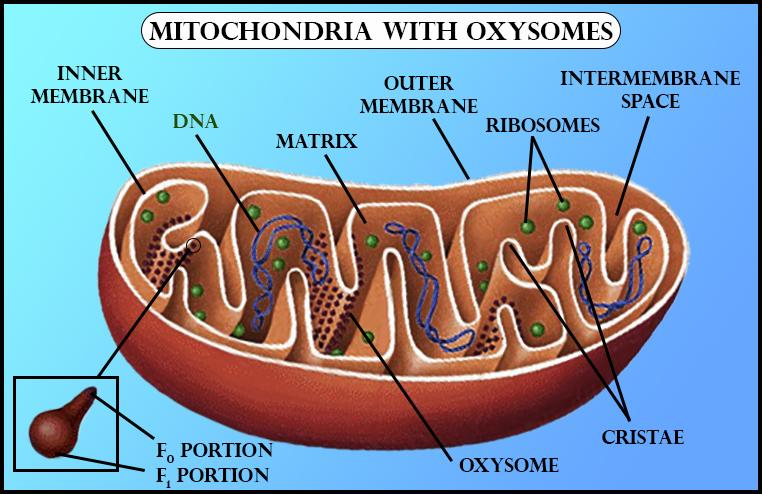
Answer
441.6k+ views
Hint: Cytoplasmic inheritance is the process of transfer of genes outside the nucleus. It occurs commonly in eukaryotic cellular parasites and organelles that are not the nucleus, but have genetic material.
Complete answer:
- Cytoplasmic inheritance is the extranuclear transmission of genes. It occurs in most eukaryotes, commonly occurring in cytoplasmic organelles such as chloroplast and mitochondria as well as cellular parasites such as bacteria and viruses.


- Mitochondria are organelles that transform energy as a result of cellular respiration. Chloroplasts are organelles that produce sugars as food for plants and algae by photosynthesis.
- Cytoplasmic inheritance occurs in these two organelles because they have their own genetic material.
- The genes located in mitochondria and chloroplasts carry out proper cellular functions and the genomes replicate independently of the nuclear DNA which is typically arranged in chromosomes that only replicate once preceding cellular division.
Additional information:
- Cytoplasmic inheritance is also known as extranuclear inheritance.
- Lysosomes are organelles responsible for the digestion of worn-out organelles. The organelles contain digestive enzymes present in a highly acidic environment to digest a number of molecules.
- The Golgi bodies are responsible for post-synthesis modifications of lipids and proteins such as sorting, tagging, packaging, and distribution.
So, the correct answer is ‘(c) Mitochondria and chloroplasts’.
Note:
- The nucleus of the cell houses the DNA responsible for the physiological functioning of the entire cell. The DNA is stored in the form of chromatin and produces ribosomes and proteins.
- There are three types of cytoplasmic inheritance: vegetative segregation, uniparental inheritance, and biparental inheritance.
Complete answer:
- Cytoplasmic inheritance is the extranuclear transmission of genes. It occurs in most eukaryotes, commonly occurring in cytoplasmic organelles such as chloroplast and mitochondria as well as cellular parasites such as bacteria and viruses.


- Mitochondria are organelles that transform energy as a result of cellular respiration. Chloroplasts are organelles that produce sugars as food for plants and algae by photosynthesis.
- Cytoplasmic inheritance occurs in these two organelles because they have their own genetic material.
- The genes located in mitochondria and chloroplasts carry out proper cellular functions and the genomes replicate independently of the nuclear DNA which is typically arranged in chromosomes that only replicate once preceding cellular division.
Additional information:
- Cytoplasmic inheritance is also known as extranuclear inheritance.
- Lysosomes are organelles responsible for the digestion of worn-out organelles. The organelles contain digestive enzymes present in a highly acidic environment to digest a number of molecules.
- The Golgi bodies are responsible for post-synthesis modifications of lipids and proteins such as sorting, tagging, packaging, and distribution.
So, the correct answer is ‘(c) Mitochondria and chloroplasts’.
Note:
- The nucleus of the cell houses the DNA responsible for the physiological functioning of the entire cell. The DNA is stored in the form of chromatin and produces ribosomes and proteins.
- There are three types of cytoplasmic inheritance: vegetative segregation, uniparental inheritance, and biparental inheritance.
Recently Updated Pages
Write the IUPAC name of the given compound class 11 chemistry CBSE

Write the IUPAC name of the given compound class 11 chemistry CBSE

Write the IUPAC name of the given compound class 11 chemistry CBSE

Write the IUPAC name of the given compound class 11 chemistry CBSE

Write the IUPAC name of the given compound class 11 chemistry CBSE

Write the IUPAC name of the given compound class 11 chemistry CBSE

Trending doubts
Fill the blanks with the suitable prepositions 1 The class 9 english CBSE

Which are the Top 10 Largest Countries of the World?

How do you graph the function fx 4x class 9 maths CBSE

Distinguish between the following Ferrous and nonferrous class 9 social science CBSE

The term ISWM refers to A Integrated Solid Waste Machine class 10 social science CBSE

The Equation xxx + 2 is Satisfied when x is Equal to Class 10 Maths

Difference between Prokaryotic cell and Eukaryotic class 11 biology CBSE

Which is the longest day and shortest night in the class 11 sst CBSE

In a democracy the final decisionmaking power rests class 11 social science CBSE




